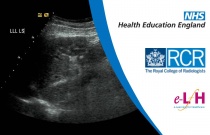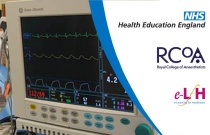The Importance of Good Communication
Sandra Hurd and Wendy Fojut
0.50 Hours
This session explains the importance of good communication in the context of end of life care. It covers the principles of good communication, and then the consequences of good and bad communication for patients, families and those working with them. This session was reviewed by Wendy Fojut, Sandra Hurd and Christina Faull and l....
Support and Care Planning at End of Life
Sue Taplin, Tes Smith
0.50 Hours
This session aims to outline the role and importance of good support and care planning for a person and their carer. This session was reviewed by Tes Smith and Richard Kitchen and last updated in February 2018.
Spirituality and the Multidisciplinary Team
Peter Speck
0.50 Hours
To develop an understanding of the importance of effective team working for the delivery of spiritual care and the importance of leadership, task, and respect for other team members and the disciplines they represent.
The School Health Team
Jane Wright
0.50 Hours
This session will explore the key aspects of a 21st century school health service, describing the multidisciplinary team involved in achieving optimum health for all school children aged between 5 and 12 years. It will contextualise the development of the school health team and its transition to modern day public health pract....
School Entry Assessment
Elaine Tabony, Mary Kiddy
0.50 Hours
This session builds on the school entry health assessment in session Surveillance and Health Promotion (411-004). It focuses on the care plan development necessary for children with identified additional health and social needs (Universal Plus and Universal Partnership Plus) following a more in-depth, holistic assessment of the....
Shared Decision Making
Antony Chuter
0.50 Hours
This session deals with treating your patients as equal partners in the decisions reached about their treatment, while meeting clinical needs and desires. This session was reviewed by Suchita Shah and last updated in August 2014.
Shoulder Impingement
Andrew Redfern and Alun Davies
0.75 Hours
This session discusses the imaging of rotator cuff pathology.
Sportsperson with a Painful Elbow
Andrew Grainger
0.50 Hours
This session deals with the most common causes of elbow pain in the athlete and their imaging findings. Although targeted at the sportsperson, many of the conditions discussed will be seen in the less athletic population.
Tendon Disease
Alastair Forrester
0.75 Hours
This session will first look at normal tendon structure and function; thereafter tendon pathology will be discussed with particular reference to the effects of ageing.
The Painful Stiff Spine
Sonya Snape
0.75 Hours
This session is a review of plain film, computed tomography and magnetic resonance imaging features of ankylosing spondylitis and its differential diagnoses with reference to the relevant anatomy and pathophysiology.
Small Bowel: GI Stromal Tumours (Hollow Organ and Mesentery)
Dafydd Richards
0.50 Hours
This session illustrates the various imaging features of gastro-intestinal stromal tumours (GISTs). The role of imaging in the management of GISTs as well as the criteria for differentiating benign from malignant tumours will be illustrated and the differential diagnosis discussed.
Techniques: Ultrasound of the Urinary Tract
Grant Baxter
0.50 Hours
This session describes the ultrasound investigation of the kidneys, renal arteries and the bladder.
Techniques: Ultrasound of the Prostate, Penis and Urethra
Grant Baxter
0.50 Hours
This session describes the ultrasonic investigation of the urethra, penis and prostate, how best to perform this and the normal appearances of these structures.
The Implications for GPs of the Equality Act (2010)
Debbie Cohen
0.50 Hours
This sessions outlines the Equality Act (EA) 2010, who it applies to and what might be considered a reasonable adjustment to the workplace to comply with the duties in the EA.
Screening Programmes Part 1: Pregnancy and Newborn
Joanne Harcombe
0.50 Hours
This session will describe and discuss the following three NHS antenatal and newborn screening programmes: screening for sickle cell and thalassaemia; newborn blood spot screening; and screening for infections in pregnancy.
Sudden Vision Loss Case Study 3
Rosemary Robinson and Ahmad Muneer Otri
0.25 Hours
This session works through a scenario concerning a patient with sudden loss of vision.
Ultrasound: Transducers and Beam Forming
Tony Evans
0.75 Hours
This session discusses the use of piezoelectric transducers to create and detect ultrasound. The choice of frequency and transducer size are seen as key elements in determining image quality, particularly spatial resolution. The influence of ultrasound beam focusing is also revealed and discussed.
Ultrasound Contrast Agents
David Cosgrove and Robert Eckersley
0.50 Hours
This is a session on diagnostic microbubble contrast agents for radiologists.
Step II-III: Opioids - Principles of Opioid Treatment
Hooi Lim
0.50 Hours
This session describes the principles of opioid therapy in particular dose titration and analgesic failure. It discusses how to control some of the adverse effects of opioid therapies.
SI Units - Anesthesiology
Rick Leggatt
0.50 Hours
This session describes the Système International d’Unités for measurement. It covers the fundamental/base and derived units in addition to non-SI units related to anaesthesia.
Transferring the Patient to Recovery - Anesthesiology
Matthew Hill
0.50 Hours
This session describes how to perform the transfer of a patient from theatre to recovery safely, and explains the responsibilities of the anaesthetist for the handover to recovery staff.
Swollen Toe - Radiology
Nyree Griffin and Jeremiah Healy
0.75 Hours
This session illustrates cardinal features of seronegative arthritides affecting the toes and discusses how to differentiate this from other causes of swollen toe. The session will start with a series of questions to test your prior knowledge.
Sexual Problems: Part 1
Karl Hollows
This session will focus on the presentation and clinical assessment of patients who describe a sexual problem within a sexual health setting.
STIs in Pregnancy
Ellen Dwyer
0.50 Hours
This session describes the sexually transmitted and other genital infections that can affect pregnancy. It also explains the diagnosis and where it may differ between pregnant and non-pregnant patients, complications, treatment and management, considering the relevance of the trimester and risk to the foetus and mother.
Testicular Problems in Childhood (Pain, Masses and the Undescended Testis)
John Somers
0.75 Hours
This session will describe the normal development of the testis and place pathological conditions into this context. It will show how radiology can assist in diagnosis and management of testicular problems in children.
























